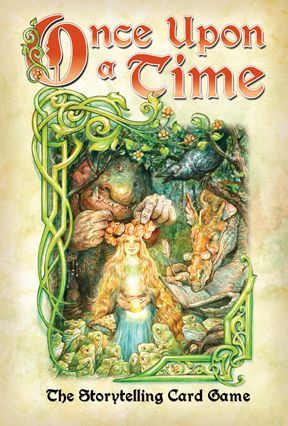Once Upon a Time: The Storytelling Card Game (1993) Board Game
Once Upon a Time: The Storytelling Card Game was first released in 1993 by Atlas Games. It was designed by Richard Lambert, Andrew Rilstone, and James Wallis, with artwork by Richard Lambert, Florence Magnin, Sophie Mounier, and Omar Rayyan. The game is a card-based storytelling game where players collaboratively create a fairy tale using the cards in their hands.
Game Components of Once Upon a Time: The Storytelling Card Game
How To Setup Once Upon a Time: The Storytelling Card Game
To set up the game, each player is dealt a hand of Storytelling Cards and one Happy Ever After Card. The number of Storytelling Cards varies based on the number of players: 10 cards for 2 players, 8 cards for 3 players, 7 cards for 4 players, 6 cards for 5 players, and 5 cards for 6 or more players. The first storyteller is determined by methods such as age, drawing a card, or other agreed-upon criteria.
Gameplay Mechanics and Game Objective
Player Experience
In Once Upon a Time, players collaborate to create a cohesive fairy tale while competing to achieve their individual story endings. The game encourages creativity and improvisation, as players must think on their feet to incorporate their cards into the ongoing narrative. The dynamic of interrupting each other adds a fun and unpredictable element, making each game unique and engaging.
Pros
Cons
Personal Thoughts on Once Upon a Time: The Storytelling Card Game
This game is perfect for those who enjoy storytelling, creativity, and interactive games. It is an excellent choice for families, educational settings, and groups of friends looking for a fun and engaging activity. While it can be enjoyed by players of all ages, it particularly shines in settings where creativity and teamwork are valued. However, it may not be the best fit for players who prefer more structured or competitive games without a strong creative element.
We are supported by our audience. When you purchase through links on our site, we may earn an affiliate commission, at no extra cost for you. Learn more.

